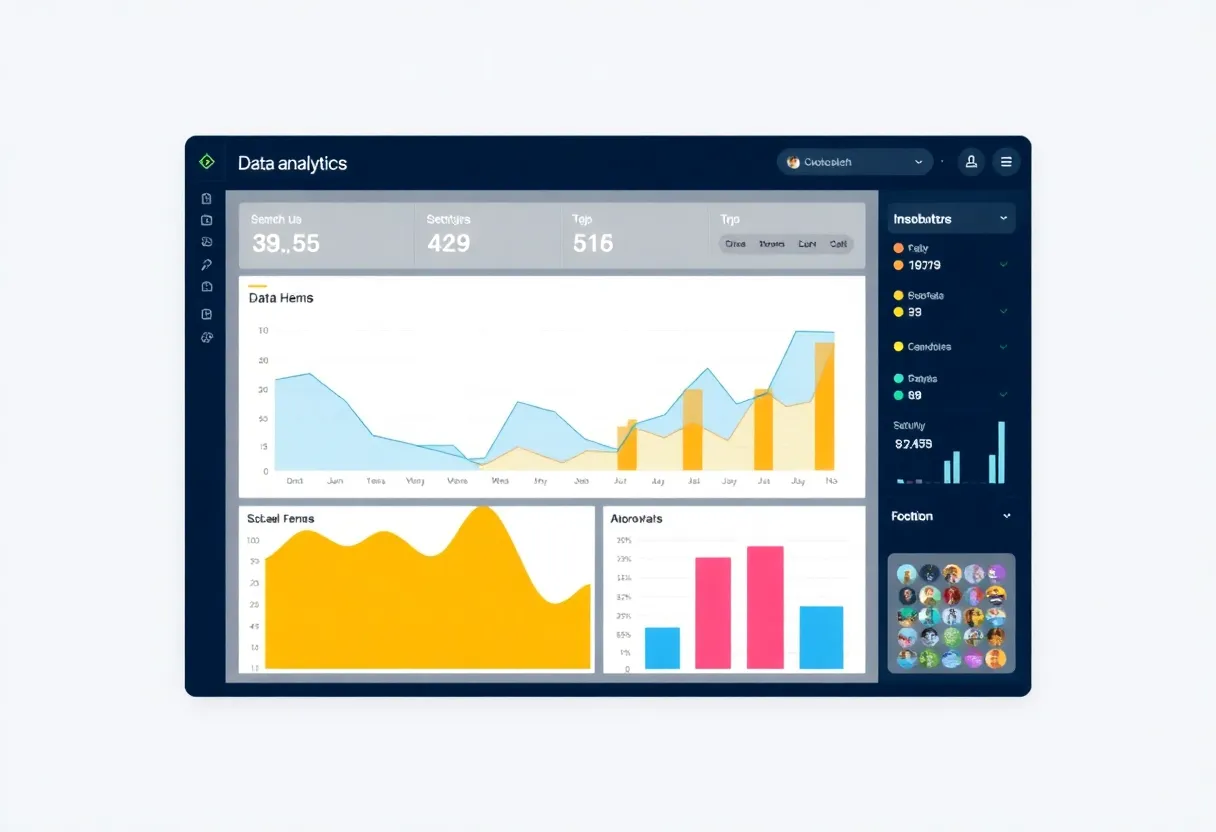

Data analytics dashboard with behavioral insights and graphs.
Article Sponsored by:
Real Internet Sales is a digital marketing agency located in Columbia, South Carolina. We specialize in website design and development, SEO, social media management, online advertising, AI integration, and workflow automation. Our services also include affiliate marketing and digital strategy.
Real Internet Sales also offer specialized programming for real estate firms, using IDX and RETS feeds to automatically populate MLS properties on their websites for improved property listings and sales. We also work with clients in the restaurant, tourism, and e-commerce industries to enhance their digital presence and streamline operations.
Behavioral targeting is an advanced digital marketing approach that allows brands to track and analyze user behaviors online. By leveraging this data, marketers can tailor their advertising strategies to meet individual consumer needs. This article will explore how behavioral targeting can amplify your digital marketing effectiveness, provide insights into its implementation, and discuss potential challenges along the way.
Behavioral targeting focuses on gathering data regarding users’ online activities. This can include the websites they visit, the content they engage with, their purchasing history, and even their interactions on social media. By analyzing this data, marketers can create more personalized experiences that resonate with consumers.
In today’s competitive digital landscape, personalization has become crucial. Consumers increasingly expect brands to understand their preferences and cater to their needs. The more personalized the marketing, the more likely it is to convert. Behavioral targeting allows brands to segment users based on their behavior, ensuring a relevant marketing approach that leads to higher engagement rates.
To effectively utilize behavioral targeting, it’s essential to implement robust data collection methods. Common techniques include:
Once data is collected, the next step is segmentation. Proper segmentation enables marketers to categorize users into specific groups based on similar behaviors or interests. Some effective segmentation techniques include:
One of the most direct ways to use behavioral targeting is through tailored advertising campaigns. By analyzing user behavior, brands can create targeted ads that reflect users’ interests. For instance:
Email marketing is a potent tool enhanced by behavioral targeting. Marketers can segment their email lists based on user behavior, leading to more effective campaigns. For example:
Another significant benefit of behavioral targeting is the ability to personalize content on websites. By analyzing visitor behavior, brands can:
Analytics tools are crucial for measuring the success of behavioral targeting. By tracking key performance indicators (KPIs) such as click-through rates, conversion rates, and customer engagement, marketers can identify what works and what does not. This data can then be used to refine strategies for better future performance.
A/B testing is another essential component for validating campaigns leveraging behavioral targeting. By testing different ad copies, email formats, or landing pages on segmented audiences, marketers can pinpoint the most effective approaches without making sweeping changes. This minimizes risk and maximizes learning.
As behavioral targeting relies heavily on data collection, privacy issues are a significant concern. Users are becoming more cautious about sharing personal information. Therefore, brands must prioritize transparent data practices. It’s essential to:
A successful behavioral targeting strategy relies on accurate data. Inaccurate data can lead to misguided marketing efforts, ultimately wasting resources. Brands should regularly audit their data collection practices to ensure:
Another challenge facing marketers is ad fatigue. Continuous exposure to the same ads can lead to users ignoring them altogether. To combat this issue, marketers should:
As technology advances, so does the potential for behavioral targeting. Emerging trends include:
Behavioral targeting is an exceptional tool for increasing digital marketing effectiveness. By understanding user behaviors, creating tailored campaigns, and measuring outcomes through analytics, brands can enhance their engagement and conversion rates. However, it is also crucial to remain aware of challenges surrounding privacy and data accuracy. By navigating these considerations, businesses can reap substantial benefits from an intelligent behavioral targeting strategy.

7001 St Andrews Rd #329 ,
Columbia, SC 29212,
United States
Phone: (+1) 803 708 5514
News Summary Norman Pearlstine has significantly influenced journalism and media management through high-profile roles at…
News Summary Norman Pearlstine has played a pivotal role in the journalism industry, having held…
News Summary OpenAI has successfully raised a staggering $40 billion in its latest funding round,…
News Summary Hooters has filed for Chapter 11 bankruptcy in Texas, aiming to address approximately…
News Summary After significant selling pressure, Asia-Pacific markets showed signs of recovery with Australia leading…
News Summary Severe thunderstorms ripped through Michigan on Sunday, leaving a devastating impact with three…